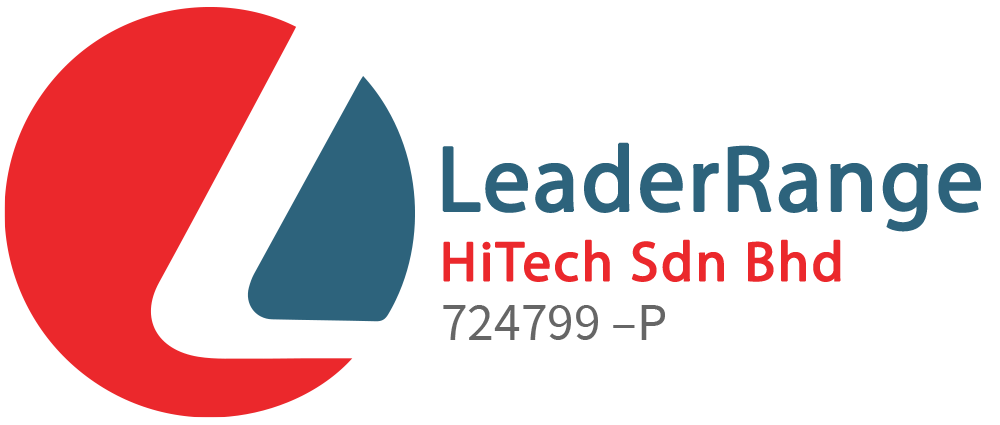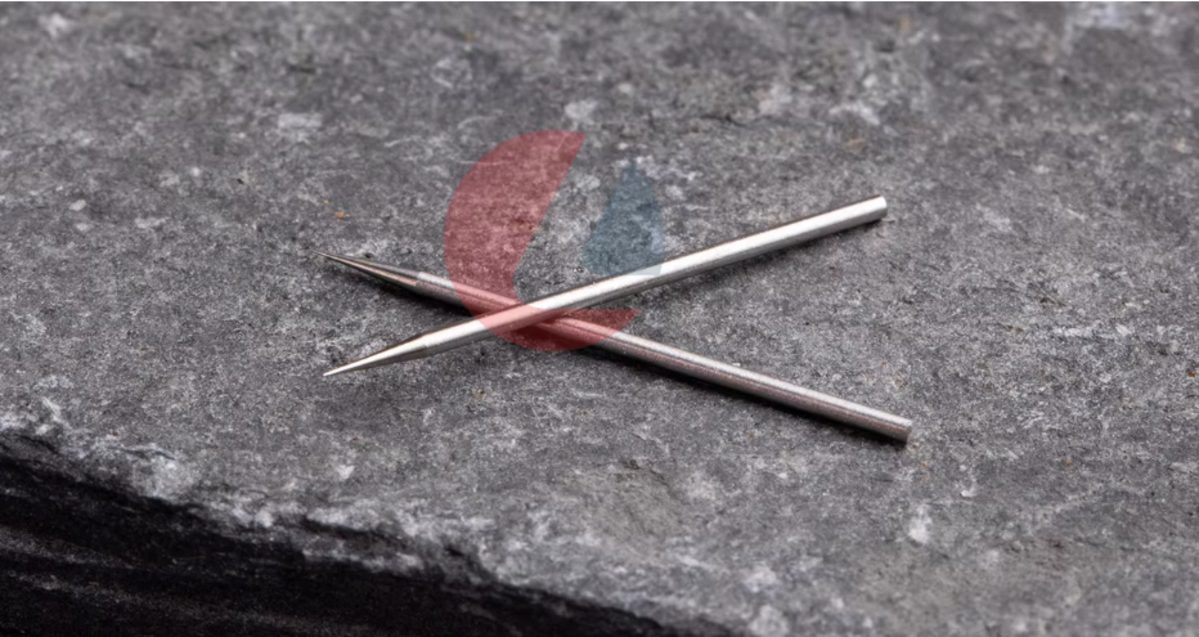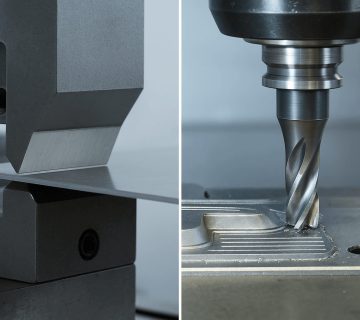In precision molding, the ejector needle plays a crucial role in ensuring the smooth removal of molded parts from the mold cavity. Without proper ejection, parts may stick, warp, or sustain damage, leading to inefficiencies in production and increased costs. Ejector pins are essential components in injection molding that push finished plastic parts out of the mold, ensuring consistent product quality and efficient cycle times.
For manufacturers striving for high-precision injection molding, selecting the right ejector pins is just as important as designing the mold itself. This article explores the types of ejector pins, material selection, best design practices, common issues, and innovations in the industry. Whether you are an ejector pins manufacturer or a mold designer, understanding these factors will help you optimize your molding process for better efficiency and product quality.
How Ejector Pins Work in Injection Molding
Ejector pins are installed within a mold and function as a mechanical means of releasing molded parts from the cavity. The process works as follows:
- Injection Phase: Molten plastic is injected into the mold cavity, filling every detail of the design.
- Cooling Phase: The material solidifies, taking the shape of the mold.
- Ejection Phase: The ejector system activates, pushing the ejector pins forward, which forces the part out of the cavity.
- Reset Phase: The pins retract, ready for the next cycle.
A properly designed ejector system ensures that parts are removed smoothly without defects like warping, sink marks, or part breakage.
Types of Ejector Pins and Their Functions
Different applications require different types of ejector needles and pins. Choosing the right one ensures efficient mold operation and minimal part defects.
1. Standard Ejector Pins
The most commonly used pins, these hardened steel ejectors push the part out of the mold without special modifications.
2. Through-Hardened Ejector Pins
These pins are heat-treated throughout their entire structure, making them durable for high-temperature molding applications where excessive wear is a concern.
3. Case-Hardened Ejector Pins
With a tough outer layer and a softer core, these pins provide a balance between durability and flexibility, reducing the risk of breakage.
4. Shoulder Ejector Pins
These are designed with a shoulder to control depth and prevent over-ejection, making them ideal for delicate molded parts.
5. Blade Ejector Pins
For narrow and deep cavities, blade ejector pins offer better contact, ensuring proper ejection without damaging thin-walled components.
6. Custom Ejector Pins
Molds with complex geometries often require custom ejector pins designed to fit specific contours and avoid part damage.
Each of these pin types serves a distinct function, and selecting the right one depends on mold design, material properties, and production volume.
Key Considerations for Selecting Ejector Pins
When choosing ejector pins, ejector pins manufacturers and mold designers should consider:
✔ Material Selection – Pins should be made from durable materials like hardened steel, carbide, or beryllium copper for wear resistance.
✔ Pin Diameter & Placement – Proper sizing prevents excessive force, which can cause part deformation.
✔ Surface Finish – Polished or coated pins reduce friction, ensuring smooth ejection and longer tool life.
✔ Thermal Expansion Considerations – For high-temperature molding, choosing pins with lower thermal expansion prevents pin jamming.
Ejector Pin Design Best Practices
Even the best-quality ejector needles can fail if not designed properly. Here are some key design tips:
✔ Proper Alignment & Clearance: Misaligned pins can cause part distortion or even mold damage. Ensuring precise positioning prevents defects.
✔ Vented Ejector Pins: Some molds require vented pins to allow trapped air to escape, preventing vacuum effects that hinder ejection.
✔ Optimal Stroke Length: Setting the correct ejection distance prevents over-ejection or part sticking.
✔ Avoid Sharp Edges: Pins with sharp edges can leave marks on finished parts, reducing quality.
By following these guidelines, manufacturers can improve efficiency, minimize defects, and extend mold life.
Common Issues and Solutions in Ejector Pin Performance
Even with proper design and material selection, issues can still arise. Here are some common ejector pin problems and how to fix them:
1. Sticking Parts
Problem: Parts remain stuck in the mold instead of ejecting properly.
Solution: Use vented pins, optimize surface finish, or increase ejection force.
2. Ejector Pin Wear and Breakage
Problem: Pins degrade quickly due to friction or repeated cycles.
Solution: Use coated pins (e.g., TiN, DLC) for added durability and choose heat-resistant materials.
3. Flash and Sink Marks
Problem: Poor pin placement causes uneven pressure, leading to cosmetic defects.
Solution: Adjust pin layout and diameter to distribute force evenly.
4. Inconsistent Ejection Force
Problem: Some pins apply more force than others, causing uneven part release.
Solution: Maintain uniform pin placement and force distribution across the mold.
Addressing these common challenges helps improve molding consistency and production efficiency.
Innovations and Advanced Materials in Ejector Pins
The injection molding industry is constantly evolving, and ejector pins manufacturers are innovating with:
✔ Titanium Nitride (TiN) & Diamond-Like Carbon (DLC) Coatings: These coatings improve pin wear resistance and reduce friction.
✔ High-Performance Alloys: Materials like tungsten carbide are being used for extreme wear resistance.
✔ Sensor-Based Ejection Systems: Modern molds integrate sensors to monitor ejector pin movement and performance for predictive maintenance.
Such advancements contribute to higher efficiency, reduced downtime, and longer mold lifespan.
Maintenance and Replacement Strategies for Ejector Pins
Proper maintenance prevents mold failure and extends the lifespan of ejector pins. Here are the best practices:
✔ Regular Inspection & Lubrication: Prevents friction-related wear and ensures smooth operation.
✔ Monitor Wear Patterns: Identify signs of pin degradation early to avoid sudden failures.
✔ Proper Cleaning: Remove contaminants like mold release agents or plastic residue to keep ejector pins in top condition.
✔ Scheduled Replacements: Replace pins before failure to maintain consistent ejection quality.
Implementing these strategies helps mold operators minimize downtime and optimize production efficiency.
Conclusion: Optimizing Ejector Pin Use for Better Molding Efficiency
The ejector needle plays a crucial role in injection molding, ensuring the smooth and efficient removal of molded parts. Choosing the right ejector pins based on material, type, placement, and coating directly impacts production efficiency, part quality, and mold longevity.
For ejector pins manufacturers and mold designers, staying updated on advanced materials, best design practices, and common troubleshooting techniques ensures the highest efficiency in production.
By implementing the right selection and maintenance strategies, manufacturers can improve part ejection, reduce defects, and enhance mold performance—leading to better quality products and cost-effective production.
🚀 Need high-quality ejector pins for your injection molding process? Consult with leading ejector pins manufacturers to get the best precision tools for your needs!


